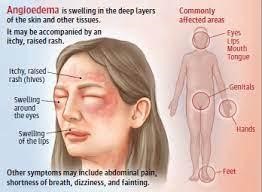A nurse is providing teaching to a client who has a history of diabetes mellitus and a new prescription for hydrochlorothiazide to treat uncontrolled hypertension. Which of the following information should the nurse include in the teaching?
"Blood glucose monitoring is likely to be inaccurate while taking hydrochlorothiazide
"You might need to decrease your insulin dosage while taking hydrochlorothiazide."
Hydrochlorothiazide therapy can elevate blood glucose levels in clients who have diabetes
Reducing sodium in your die whim taking your control your blood glucose."
The Correct Answer is C
The nurse should include in the teaching that hydrochlorothiazide therapy can elevate blood glucose levels in clients who have diabetes. Hydrochlorothiazide is a diuretic commonly used to treat hypertension (high blood pressure). While it is effective in reducing blood pressure, it can sometimes cause adverse effects on blood glucose levels, particularly in individuals with diabetes mellitus.
Hydrochlorothiazide can cause an increase in blood glucose levels by reducing insulin sensitivity, leading to potential hyperglycemia (high blood sugar) in some individuals. Clients with diabetes should closely monitor their blood glucose levels while taking hydrochlorothiazide and inform their healthcare provider if they notice significant changes.
Let's go through the other options:
A. "Blood glucose monitoring is likely to be inaccurate while taking hydrochlorothiazide": This statement is not accurate. Hydrochlorothiazide does not directly affect the accuracy of blood glucose monitoring. However, it is essential for clients with diabetes to be aware of the potential impact of hydrochlorothiazide on their blood glucose levels.
B. "You might need to decrease your insulin dosage while taking hydrochlorothiazide": Hydrochlorothiazide can potentially elevate blood glucose levels, which may require adjustments in diabetes management, including insulin dosage. However, it is not accurate to state that all clients will need to decrease their insulin dosage while taking hydrochlorothiazide. Each client's response to the medication may vary, and adjustments to diabetes medications should be made under the guidance of their healthcare provider based on individual blood glucose monitoring.
D. "Reducing sodium in your diet can help control your blood glucose while taking hydrochlorothiazide": While reducing sodium in the diet is generally a beneficial recommendation for individuals with hypertension, it is not directly related to controlling blood glucose levels in clients with diabetes. The primary focus for individuals with diabetes taking hydrochlorothiazide should be on monitoring blood glucose levels and working with their healthcare provider to manage any changes related to the medication.
Nursing Test Bank
Naxlex Comprehensive Predictor Exams
Related Questions
Correct Answer is C
Explanation
The nurse should expect angioedema as one of the manifestations of anaphylaxis in a client experiencing an allergic reaction to an antibiotic. Angioedema is a severe swelling that occurs beneath the skin, typically affecting the face, lips, tongue, throat, or other body parts. It is a result of the release of histamine and other inflammatory mediators in response to the allergen.
Anaphylaxis is a life-threatening allergic reaction that can occur rapidly and affect multiple body systems. In addition to angioedema, other common manifestations of anaphylaxis include:
-
Difficulty breathing or wheezing due to bronchospasm
-
Hives or urticaria, which are itchy raised skin rashes
-
Severe itching or tingling sensation
-
Rapid and weak pulse
-
Low blood pressure leading to hypotension
-
Nausea, vomiting, or diarrhea
-
Feeling of impending doom or anxiety
Let's go through the other options:
A. Hypertonic reflexes: This is not a manifestation of anaphylaxis. "Hypertonic reflexes" are not typically associated with allergic reactions or anaphylaxis. Hypertonic reflexes refer to increased muscle tone, but they are not part of the usual presentation of anaphylaxis.
B. Increase in systolic blood pressure: Anaphylaxis usually leads to a decrease in blood pressure rather than an increase. The decrease in blood pressure can be severe and result in shock, which is a life-threatening condition.
D. Urinary retention: Urinary retention is not a common manifestation of anaphylaxis. Anaphylaxis primarily affects the respiratory and circulatory systems, leading to airway constriction, difficulty breathing, and cardiovascular collapse. Urinary retention is not directly related to the pathophysiology of anaphylaxis.

Correct Answer is A
Explanation
The nurse should include lightheadedness as an adverse effect in the teaching for a client who has a new prescription for atenolol. Atenolol is a beta-blocker medication used to treat various conditions, including hypertension and certain heart conditions. One of the common side effects of beta-blockers is orthostatic hypotension, which can cause lightheadedness or dizziness when the client stands up from a sitting or lying position.
Let's go through the other options:
B. Tachycardia: Tachycardia is not an adverse effect of atenolol. In fact, atenolol is used to treat tachycardia by slowing down the heart rate.
C. Dry mouth: Dry mouth is not a typical adverse effect of atenolol. Dry mouth is more commonly associated with anticholinergic medications rather than beta-blockers like atenolol.
D. Bronchodilation: Bronchodilation is not an adverse effect of atenolol. In contrast, atenolol can cause bronchoconstriction (narrowing of the airways) in some individuals, particularly those with asthma or chronic obstructive pulmonary disease (COPD).
Whether you are a student looking to ace your exams or a practicing nurse seeking to enhance your expertise , our nursing education contents will empower you with the confidence and competence to make a difference in the lives of patients and become a respected leader in the healthcare field.
Visit Naxlex, invest in your future and unlock endless possibilities with our unparalleled nursing education contents today
Report Wrong Answer on the Current Question
Do you disagree with the answer? If yes, what is your expected answer? Explain.
Kindly be descriptive with the issue you are facing.
